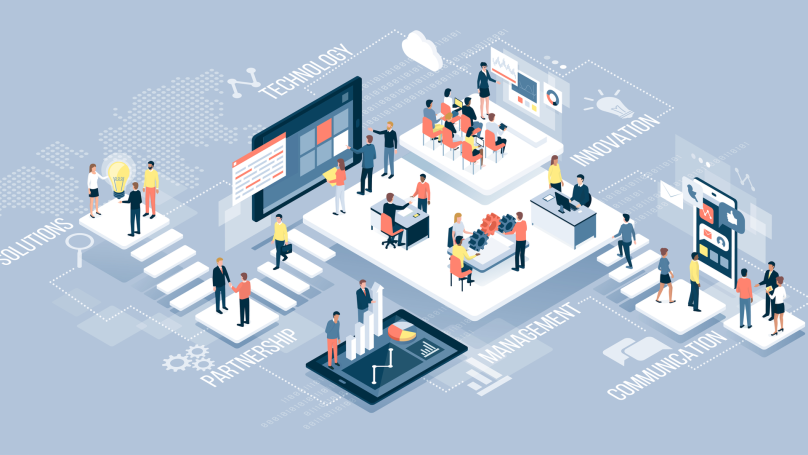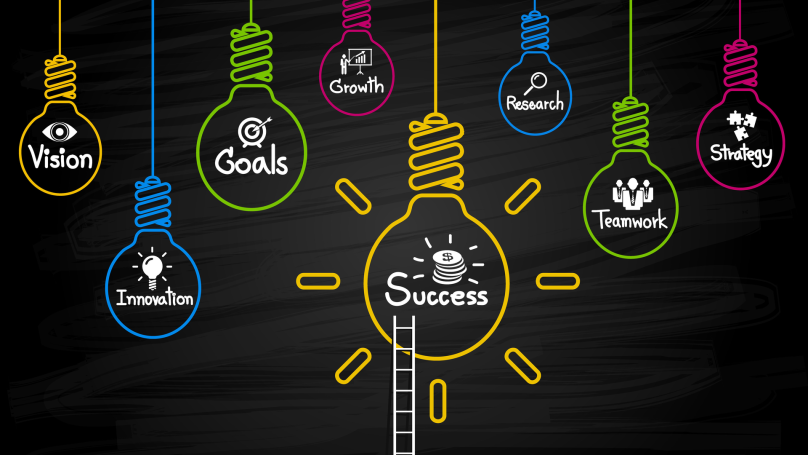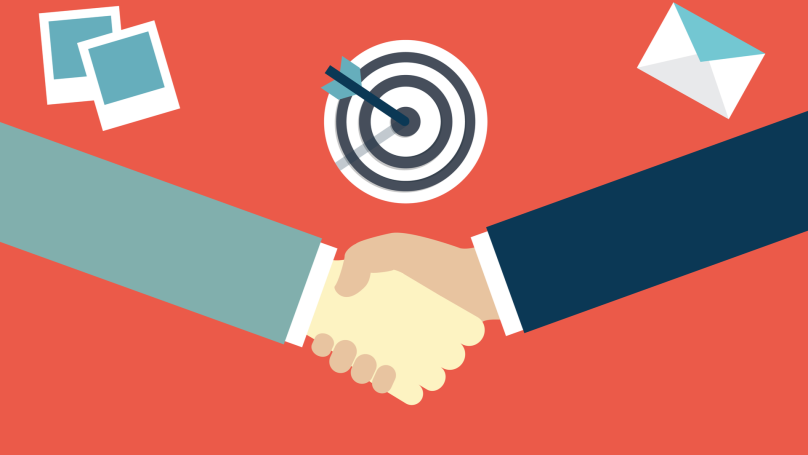Customer Development (CustDev)
What is Customer Development?

In simple terms, Customer Development, or CustDev is a way of getting feedback from users or customers while testing a product prototype for further improvement and full release. Moreover, Customer Development is a way of reaching out to potential customers, identifying their needs, and validating how well the company's prototype meets those needs to produce a product they will buy. These are the key reasons for the success concepts of the CustDev concept around the world.
CustDev is a qualitative analysis tool that explores different ideas and hypotheses that you then test in practice. You base CustDev algorithms on the following principles:
- The potential client is central to CustDev, as all hypotheses aim to depict their accurate portrait, pains, and desires.
- You must test every hypothesis on a real audience to assess its real-world outcome.
- CustDev requires knowledge of human psychology to identify consumer behavior patterns.
- The product development process is staggered and divided into iterations, i.e., repetitive fixed periods.
What tasks does Customer Development solve?
When is the best time to use the Customer Development methodology? It is typically most effective in three instances:
- You already have a product, but it's not viable in the marketplace. You need to identify this reason and address it by studying the consumer's needs and using the product. In this way, you will get hypotheses about why the product is unviable and possible scenarios for its future development.
- You want to launch a new product, but you don't have the right ideas. By studying people's behavior patterns and habits, you can discover unexpected needs and generate quality business ideas to address them.
- You have a business idea and want to perfect it to minimize risk. You analyze the audience's reaction to the concept and subsequently adapt the idea.
When you should not use CustDev

The CustDev methodology is only unsuitable for you if you see the following disadvantages of this approach as an obstacle:
- A low level of confidentiality. That creates a risk of leaks of information and business ideas. However, since the purpose of CustDev is to research the audience openly, you will not be able to keep your designs secret.
- Time-consuming. The process of gathering information and working on a product takes place in several iterations. Like making regular changes to a product, this slows down the process of getting it to market and distances the moment the company starts to make a profit.
- Resistance from team members. Product developers may perceive CustDev as a company's doubts about their knowledge and skills, thus increasing the risk of internal conflicts.
Customer Development Training
A customer development manager should have the following skills to fulfill their duties and ensure comprehensive and sustained customer development:
- Negotiation and interviewing skills. A considerable part of the castaway is communicating with team members and audiences, gathering opinions, and conducting surveys.·
- Project management. Castdev is essentially a project within a project, where you lead a separate project to improve and test the product as part of its creation.
- Prioritization and time management. You need to plan your Customer Development iterations and tasks competently to lead consistent work on the product.
- Knowledge of audience and sales. You need to identify customer needs, compose customer avatars and segment your audience when necessary.
Lectera offers quality online training and courses on CustDev. Additionally, CustDev training and books, such as Cindy Alvarez's book "Lean Customer Development: Building Products Your Customers Will Buy" will also help you learn all the above skills and stages of working on a product from scratch.
How to conduct CustDev

Each stage of the Customer Development model is an iterative process. Also, if you disapprove of hypotheses, the cycle is repeated until the right theory is confirmed. The Customer Development model has a total of four stages (cycles):
-
Customer discovery: identify customers
The first thing to do is to gather information about your potential audience and test the very first hypothesis: How viable is your idea even? Does the market need it? Next, please find out your customers and analyze their demand for your potential product. That will also answer where to take respondents for CustDev in the future.
-
Customer validation: verify consumers
Based on the information collected, create an MVP - a minimally viable product, i.e., its first working prototype exclusively with the features you need to solve the identified customer problem. Already at this stage, you need to see the target audience's desire to buy your product (even the prototype!). To do this, you need to make appropriate arrangements, i.e., arrange a product demonstration, provide potential customers with a trial version and collect feedback through interviews. Based on this feedback, corrections are made to the product, after which it is demonstrated again. And so it goes round and round until there are no fixes or comments left. The result is a finished and in-demand product.
-
Customer creation: expand your customer base
At this stage, you have already verified the information you collected and implemented it in your product, getting your first customers/users. Now you need to expand this audience and generate sales. To do this, you show the finished product to the audience that was not involved in the testing and new segments that the Customer Development process allowed you to identify.
-
Company building: building the company
The final stage of Customer Development is to turn the idea into a full-fledged business. Then, based on previous mistakes, experience and information gathered, you consolidate the result by launching a marketing campaign and stabilizing business processes. It is also important to ensure that the new customer gets developed in practice.
Questions for the CustDev interview

The CustDev interview plays a special role because you base the model on the collected feedback. As your goal is to understand the needs of potential customers and evaluate your product, you need to conduct in-person or online in-depth user interviews consisting of six sequential stages. Each stage has its sample questions.
To find out how your target audience thinks, ask the following questions:
- What problem in this area (say, software or cosmetics) have you encountered recently? Tell us about it.
- How important is this problem to you? What are the implications?
- Have you already tried to solve it? How have you dealt with it?
- Have you been able to resolve it? Why?
- What advantages and disadvantages have you found with these solutions?
To find out how the audience views your product, ask the following questions:
- How do you rate the solution we have developed?
- Do you think it will solve your problem? Is it useful to you?
- What disadvantages and advantages do you see in our solution?
- Are you willing to pay, and if so, how much?
- What do you think is the right price for the benefit of our solution?
If you need to test the audience's reaction to an existing product based on their experience, ask the following questions for CustDev:
- How did you learn about our product?
- How long have you been using it? When was the last time you used it?
- What are your dissatisfactions with it?
- How important are these faults? What consequences do they have?
- How do you think we can best fix these shortcomings?
If you want to find out directions in which you could develop the product, ask the following questions for the CustDev interview in addition to those listed above:
- In what non-standard situations do you use this product? And in what conditions would you like to use it?
- How would you tell your friend about this product?
- What do you lack in this product to call it ideal?
- Do you have any specific product preferences or criteria?
These questions will also help you form a sales development plan and understand how to develop key customers in the case of your business.
Examples of Customer Development

Groove
Groove is a B2B Helpdesk software. However, despite high conversion rates, the company faced a customer retention problem: the customer churn rate was 3%, and Groove simply could not work out the reason. So they started communicating directly with their target customers, aiming to learn more about them. To do this, they contacted customers by email and gathered feedback about Groove's product, services, and even values, thus testing different potential causes of the problem.
Resultingly, Groove had a new customer development strategy. They realized that the main problem was ineffective customer service, and by improving it and building a loyal customer profile, they were able to grow their base from 2,000 paying users to 5,000 in just one year. In the process, they also tested different promotion channels and found that blogging was the most effective, so they began to develop it actively. So Groove's example proves that CustDev is essential in marketing, too.
Dropbox
During the idea development phase, the cloud storage service Dropbox tried to understand the problems with storing and accessing files the majority of users were experiencing. The company realized that users were not happy with the current storage and access methods, but no one was trying to create a new, more flexible solution, and everyone had to be satisfied with what was already on the market. So Dropbox created a new niche by deciding to invent a product that will fix all the shortcomings of its competitors' products.
CustDev of a clothing brand
So, how do you conduct a CustDev for a clothing brand? Alex Feechan, founder and CEO of outerwear brand FINDRA, devoted several years researching her target audience and testing hypotheses. Market research has helped Feechan launch prototype clothing lines. In the process, she gathered reactions from her target audience and wondered what modern men and women lack in the outerwear they buy and wear today. In the end, FINDRA took four years to create, but today it is the company that leads its market niche. Thus, CustDev applies to a clothing brand just as it is to any niche, and is based on the same principles, interviewing, and objectives.























